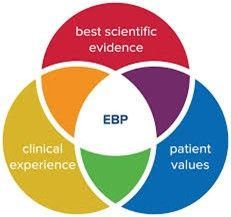School-Based Mental Health – 3 Ways to Offer Services
School-based mental health is now coming to the forefront as a location for children and adolescents to receive care. According to the Center for Mental Health in Schools, between 12 and 22 percent of school-aged children and youth have a diagnosable mental health disorder. Many advantages exist in providing services at the school. First, school personnel such as teachers and nurses are excellent observers of behavior patterns in a child act as the referent for service. Second, most schools have the space to provide a confidential office for therapy or other services to occur. Third and most important, having a child improve their emotional functioning also improves their attendance, citizenship, and grades. This is a winning result for the district, the child, and the parents.
Some schools may object to pulling a child out of instruction. However, agencies can argue that a mental health appointment is not any more disruptive than a dental or medical appointment. Plus, the services can be held onsite rather than needing transportation to go and return.
But school-based mental health is a luxury that many districts cannot afford. For example, the State of California is now recruiting 10,000 clinicians to become school counselors. In a time of the Great Resignation, salaries, loan forgiveness, and other strategies may not be enough to find employed therapists. Furthermore, with the COVID-19 pandemic, the emotional well-being of children at school has taken a hit due to social isolation and lack of educational continuity.
Behavioral health agencies have 3 opportunities to advance into the school-based mental health void, helping schools with their youths experiencing mental health challenges.
1. Medi-Cal services in the school. For youths with Medi-Cal, services that would be provided at a clinic or in the community can also be provided in the school. The youth’s treatment is paid for by Medi-Cal or Medicaid, depending on the state. The school thus can have the child seen for services and benefit from treatment without paying for their treatment.
2. Non-public agency. In California and Washington, as an example, behavioral health agencies can apply to become non-public agencies (NPA’s) which allow them to treat children whose Individualized Education Plan (IEP) requires mental health treatment. It can take several months to receive the certification, but it opens doors to agencies that do not have the resources to help children in need. For example, a school district in Los Angeles contracted with a behavioral health agency to avoid sending their students to out-of-state residential facilities, thereby reducing costs and also keeping students at home and functioning in school.
3. Managed care services. If a youth is covered by private insurance or managed care companies, the agency can begin the process of credentialing and contracting with these agencies. As with the NPA, the course of time can be lengthy but advantageous in the long term as it expands the flow of clients through the schools for services.
School-based mental health provides many opportunities for agencies to expand their service reach and also help the community. The more flexible an agency can be, the more likely they are to have a stable base of referrals and generate revenue.
Praxes offers consulting services to behavioral health organizations, including school-based mental health. For more information, please contact us.




